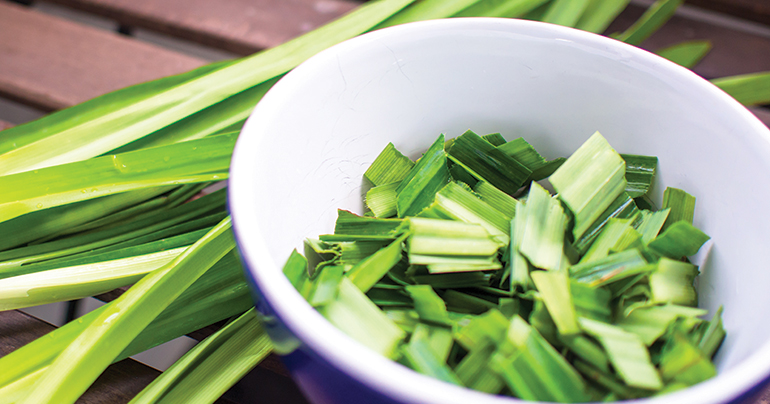A staple in Southeast Asian cooking, pandan leaves are making their mark on high-end Western cuisine – helped by a celebrity endorsement from UK culinary queen Nigella Lawson

Long used throughout Southeast Asia to add a dash of flavour to curries, cakes and a host of other dishes, pandan leaves are equally sought after in the East for such alleged health benefits as soothing sunburn and acting as a natural mosquito repellent. Now, though, these stringy green leaves seem to be making their way into the high-end restaurants of the West.
Ben Davy, head development chef at the respected Ox Club restaurant in Leeds, UK, said that his first brush with pandan leaves came in the United States – though only, he said, as an unplaceable aftertaste in his table-water. Since then, his team has been playing around with pandan essence in their desserts, finally settling on a curious twist on the Southeast Asian staple – pandan-flavoured ice cream.
“People love it – it’s ice cream, so it’s difficult not to like,” he told Southeast Asia Globe. “And it’s a great way to introduce people to that kind of flavour. It’s so unique – you can’t quite put your finger on it – it warms your nose while you’re eating it and has this lovely savoury note to it, but also this sweetness – there’s nothing like it over here. It’s a really interesting flavour, and it’s quite nice that we’ve got an opportunity to show it to people and put a little twist on it.”
Pandan’s rising popularity may have been helped along by an endorsement from British culinary queen Nigella Lawson late last year, who predicted that the mysterious flavouring – often, if not entirely accurately, compared with vanilla – would bump off matcha as the next foodie trend.
“It’s definitely happening,” Davy said. “It’s never planned, these kinds of things, like when matcha was massive or ouzo was big for a bit. One or two people start using it and before you know it, everyone’s giving it a go – which is great, and that’s one of the beauties of the internet.”
This article was published in the February edition of Southeast Asia Globe magazine. For full access, subscribe here.

